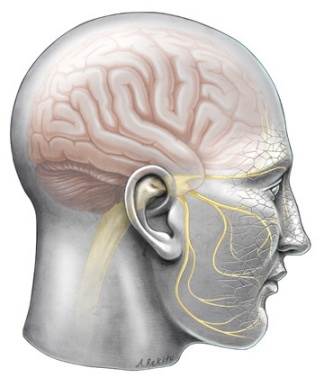What Causes Communication Disorders?
Deficits may arise from neurological disease such as concussion/TBI, Parkinson Disease, dementia, stroke. Developmental and congenital/genetic dysfunction can lead to language impairment, learning disability or attention deficit disorder.
Speech-language pathologists address communicative disorders in the following areas: Speech sound production, Language comprehension and expression, Voice dysfunction, grammar use/formation, social communication, memory, sequencing, problem solving, and executive functioning.
Voice Therapy
The inability to use our voices effectively has the potential to have a major impact on personal relationships, careers, and the overall quality of our lives. Although many think that voice therapy is reserved for singers, actors, and broadcasters, in reality, virtually everyone can benefit from voice therapy to heal, manage, or prevent voice disorders at some point.
Speech-language pathologists (SLPs) specializing in voice therapy are involved in the diagnosis, assessment, planning, and treatment of individuals with voice disorders.
The speech-language pathologist analyzes voice use, and teaches proper breath support, relaxation, and voice placement to optimize speaking. A variety of techniques are utilized to accomplish this goal. These healthcare providers are trained to evaluate voice use and vocal function to determine the causes of voice loss and the best treatments for improving and maintaining voice production.
Cognitive Rehabilitation Therapy addresses the cognitive problems that occur after a brain injury or other neurological diseases, including memory, attention, social behavior, judgment, visual-spatial perception, and language. These difficulties affect the abilities of the patient to care for themselves, interact socially, and complete tasks. The goals for treatment depend on the patient’s deficits. For example, a person with memory problems may receive written strategies for memory improvement. Treatment may be delivered individually or group therapy and the intensity will vary.
Restorative Rehabilitation focuses on improving a specific cognitive function, where as a Compensatory rehabilitation focuses on adapting to the presence of a cognitive deficit. Increasing the client’s independence is a major component of the rehabilitative process.

Neuro Muscular Speech Therapy
Apraxia (Dysarthria) is caused by damage to the parts of the brain responsible for speaking. It is a treatable neurologic, speech disorder and individuals can benefit even when the apraxia is considered chronic. Apraixia can occur with muscle weakness of the face, mouth, and respiratory system, which affects speech production, or aphasia (language difficulties related to neurological damage).
Oral-motor function relates to the movement and placement of the oral (mouth) structures such as the cheeks, lips, teeth, and tongue. Oral-motor treatment brings attention to the muscles of the face, through exercises to increase coordination of the muscles controlling the mouth, vocal cords and face.
Auditory Processing Disorders arise when an individual hears the sound correctly at the level of the ear but has problems with the transmission of this sound up the nerve and to the specific part of the brain.
Language Processing Disorder is a neurological problem, affecting attention, memory, following directions, learning, and sometimes even reading, spelling, and writing. Individuals with Language Processing Disorders have trouble following spoken directions, difficulty understanding and joining in conversations, limited vocabulary and sentence structure, and reduced understanding of stories.
LSVT LOUD:
LSVT LOUD® is an effective speech treatment for individuals with Parkinson disease (PD) and other neurological conditions. LSVT LOUD improves vocal loudness by stimulating the muscles of the voice box (larynx) and speech mechanism through a systematic hierarchy of exercises. Research data support improvements in vocal loudness/tone, and voice quality for individuals with PD and improvements maintained up to two years after treatment. Recent research studies have also showed improvements in disordered articulation, diminished facial expression and impaired swallowing. Additionally, two brain imaging studies have documented evidence of positive changes in the brain following administration of the therapy.
Schedule An Appointment